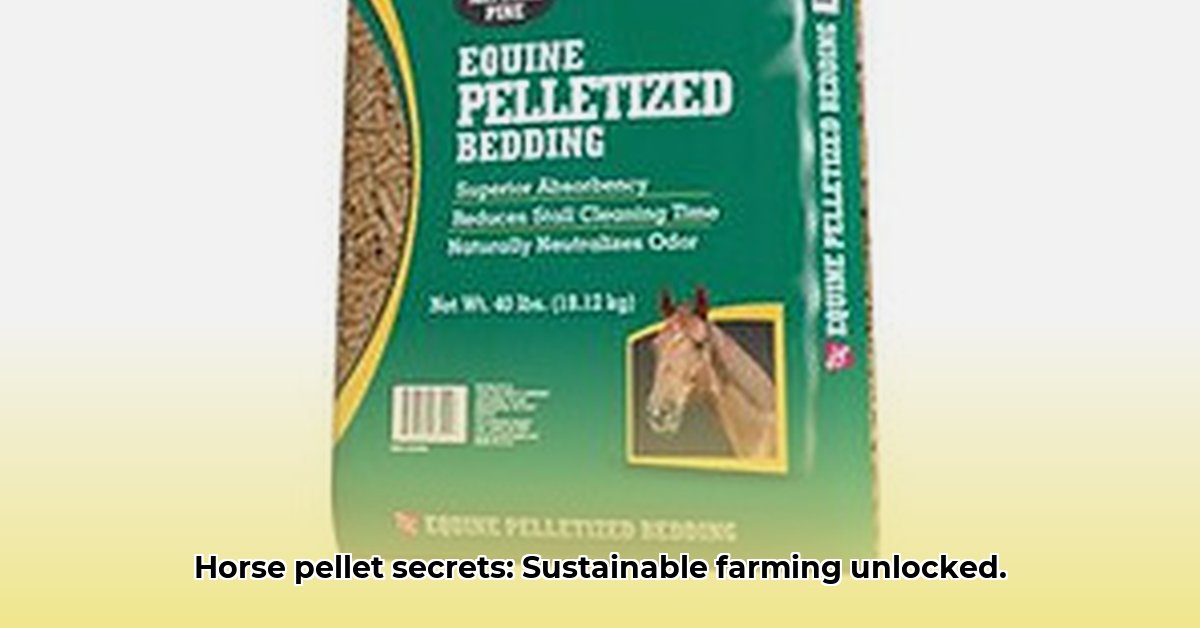
Understanding Horse Nutritional Needs
Choosing the right horse feed is crucial for optimal health and performance. This guide focuses on horse pellets from Tractor Supply, providing a comprehensive understanding of their benefits and how to select the best options for your horse. We'll cover nutritional needs, pellet types, and sustainable choices, ensuring both your horse's well-being and environmental responsibility. For more information on bedding options, check out Tractor Supply Bedding.
Does your horse's current feed adequately meet its energy and nutrient requirements? Understanding a horse's nutritional needs is the first step, and it varies greatly based on factors like age, breed, activity level, and health. For example, a young, growing horse needs a higher-protein diet than an older, less active horse. This means that a careful consideration of these factors is necessary when selecting the optimal pellets.
A young, energetic horse requires a diet rich in protein and energy to support growth and development. In contrast, a senior horse may benefit from a high-fiber diet to aid digestion and prevent weight gain. This understanding is pivotal in choosing the correct Tractor Supply horse pellet type.
Tractor Supply Horse Pellets: A Comprehensive Overview
Tractor Supply offers various horse pellet types, each catering to specific needs. Let's explore the most common varieties:
High-Fiber Pellets: Ideal for senior horses or those prone to weight gain, promoting healthy digestion. The high fiber content acts as a slow-releasing energy source, keeping them satisfied without overfeeding. These pellets are particularly useful for horses that tend to gain weight easily.
High-Protein Pellets: Designed for growing, working, or recovering horses, providing the extra protein necessary for muscle development and energy levels. These pellets provide a boost in protein.
Sweet Feed Pellets: More palatable for picky eaters, but higher in calories and lower in fiber. They should be used sparingly as a supplement, not the primary feed source. Sweet feed pellets should be used judiciously to avoid weight gain.
Specialized Pellets: Formulated for specific health conditions, like metabolic disorders or dental issues. Always consult your veterinarian to determine the suitability of specialized pellets. Veterinary guidance is crucial for horses with special dietary needs.
Here's a comparison table summarizing the key characteristics of different pellet types:
| Feature | High-Fiber Pellet | High-Protein Pellet | Sweet Feed Pellet |
|---|---|---|---|
| Primary Benefit | Digestive health, weight management | Muscle growth, performance | Palatability, energy boost |
| Ideal Horse | Senior, overweight, easy keepers | Growing, performance, recovering | Healthy, picky eaters |
| Key Ingredients | High fiber (alfalfa, grass) | High protein (soybean meal) | Grains, molasses |
| Potential Drawbacks | May not provide enough energy for active horses | May lead to weight gain if overfed | Higher in sugar and calories |
Selecting and Integrating Horse Pellets into Your Horse's Diet
Comparing brands involves scrutinizing ingredient lists, prioritizing high-quality ingredients and avoiding excessive fillers. While price per pound is a factor, consider the nutritional value for better value assessment. Some experts advocate for comparing cost-per-nutrient to optimize value.
Integrating new pellets requires a gradual approach to prevent digestive upset. Follow these steps:
- Initial Mix: Begin by mixing 25% of the new pellets with the existing feed.
- Gradual Increase: Over several days, incrementally increase the new pellet ratio, reaching a 50/50 mix.
- Complete Transition: Continue this process until your horse consumes 100% of the new pellets.
- Monitoring: Closely monitor your horse for any digestive issues, such as diarrhea or appetite changes.
Remember, hay forms the cornerstone of a horse's diet, with pellets serving as a nutritional supplement. Always provide access to clean, fresh water. Routine veterinary checkups are vital for monitoring your horse's overall health and nutritional status.
Sustainable Feeding Practices: A Holistic Approach
To feed your horse sustainably, look for brands committed to responsible sourcing and environmental stewardship, promoting healthy farming practices. Supporting ethical companies promotes sustainable practices, benefiting both your horse and the planet.
Dr. Emily Carter, Equine Nutritionist at the University of California, Davis, emphasizes: "Sustainable feeding practices are not just a trend; they are a crucial part of responsible horse ownership. The environmental impact of feed production should be a consideration in your decision making."
Expert Consultation: Prioritizing Individual Needs
This guide provides a valuable foundation, but each horse is unique. Consulting your veterinarian or an equine nutritionist is crucial for tailoring a feeding plan to your horse's specific needs. They are the best resource for ensuring your horse's optimal health and well-being.